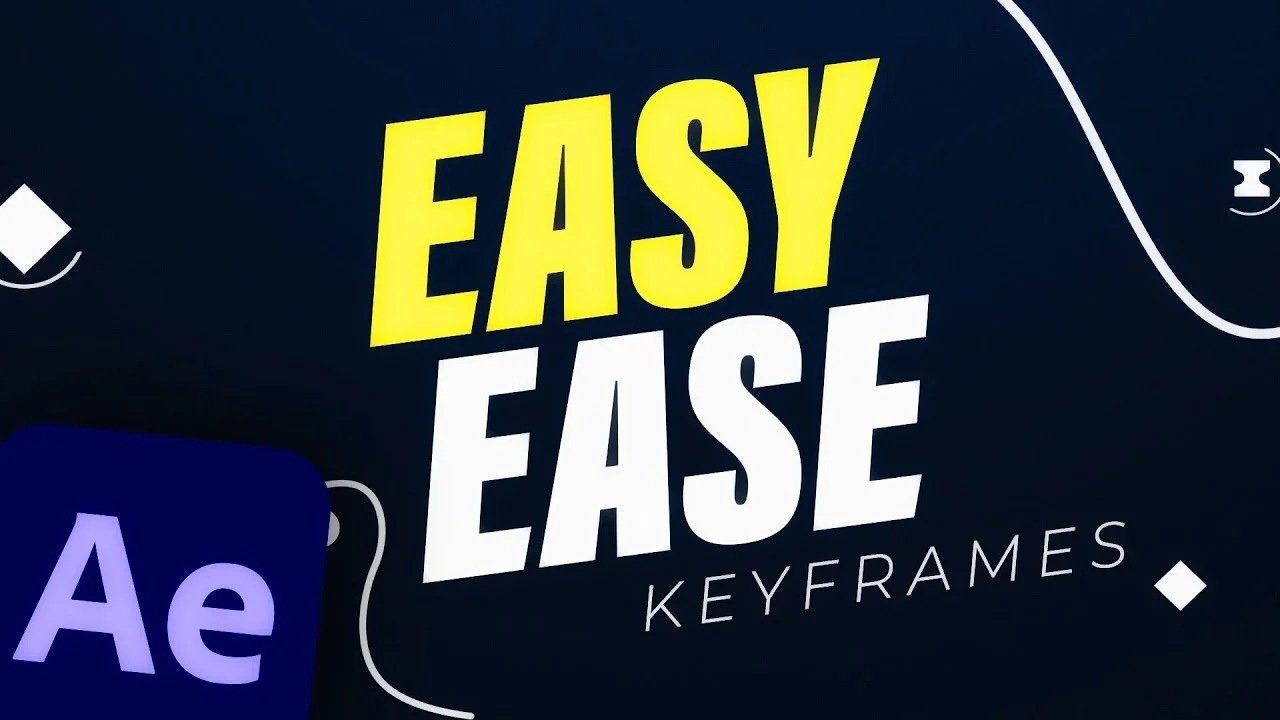Mastering Easy Ease in After Effects
Welcome to this tutorial on the best tip for learning motion graphics! My name is Andrew, and today I’m excited to share a game-changing concept for After Effects: using Easy Ease to refine the animation of your keyframes.
Whether you're a motion design beginner or someone looking to enhance your animation skills, learning how to use Easy Ease will elevate your work to the next level. Let’s dive in!
What is Easy Ease?
In After Effects, keyframes control animation by marking the start and end points of an object’s motion. By default, animations are linear—starting and stopping abruptly, often resulting in a robotic look.
Easy Ease introduces interpolation between keyframes, allowing your animation to start slowly, accelerate, and then decelerate smoothly. The result? Motion that feels natural and dynamic.
A Quick Demo
Here’s a simple project example to illustrate the concept. I’ve set up an animation with text and shape layers (lines, squares, circles, and triangles). Let’s break it down:
Default Keyframes:
The default keyframes (represented as diamond markers) create linear motion. Objects move at a constant speed with no acceleration or deceleration.
Easy Ease Applied:
With Easy Ease, animations become smoother. For instance, the circle starts moving slowly, reaches a peak speed, and then slows down at the end.
Custom Adjustments:
The triangle's motion demonstrates an extreme version of Easy Ease, where the speed explodes in the middle of the motion and slows down dramatically at the end.
Exploring the Graph Editor
The Graph Editor in After Effects is your best friend when fine-tuning animations. Here’s how to interpret it:
Speed Graph:
Displays the motion's speed over time.
A flat line means constant speed, while curves indicate acceleration and deceleration.
Breaking Down the Graphs
Square (Linear Motion):
The speed graph is a flat line, representing a constant rate of movement.
Circle (Easy Ease):
The graph starts at zero pixels per second, peaks in the middle, and tapers back to zero. This creates a smooth start and stop.
Triangle (Custom Ease):
By adjusting the handles in the Graph Editor, you can create a dramatic acceleration in the middle, followed by a slow deceleration.
Step-by-Step Guide to Using Easy Ease
Here’s how to apply Easy Ease to your keyframes and customize the motion:
Set Keyframes:
Select an object (e.g., a square), click the stopwatch icon next to Position, and set start and end keyframes by moving the object.
Apply Easy Ease:
Select the keyframes, right-click, and navigate to Keyframe Assistant > Easy Ease. Alternatively, use the shortcut
F9(on Windows).
Open the Graph Editor:
Toggle the Graph Editor to view and adjust the speed graph.
Customize the Motion:
Drag the handles of the keyframes to adjust the influence. For example:
Pull the handles outward to create a smoother curve for gradual acceleration.
Push the handles inward for more abrupt changes.
Visualizing the Results
To better understand how these adjustments affect motion, let’s compare the animations:
Linear (Square): Moves at a fixed speed without easing.
Easy Ease (Circle): Starts and ends smoothly, with a peak speed in the middle.
Custom Ease (Triangle): Features extreme acceleration and deceleration for dramatic effect.
Tips for Mastering Easy Ease
Practice with Different Speeds:
Experiment with varying degrees of easing to match the style of your animation.
Use the Graph Editor Often:
This tool is invaluable for visualizing and tweaking motion.
Combine with Other Techniques:
Pair Easy Ease with other After Effects tools, like motion blur, to add an extra layer of realism.
Why Easy Ease is Essential
Without easing, animations can feel mechanical. Easy Ease makes your motion fluid and professional. Whether you’re animating text, shapes, or complex elements, mastering this feature will transform your motion graphics.
Next Steps
Ready to practice? Start with simple shapes and apply Easy Ease to their position keyframes. Gradually experiment with different settings and observe how they affect motion.
Don’t forget to subscribe to my YouTube channel and hit the bell icon to stay updated on new content. Let me know in the comments below if you have questions or suggestions for future tutorials. Happy animating!

